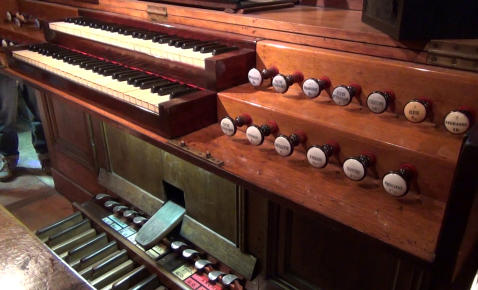



ORGANS OF PARIS © 2024 Vincent Hildebrandt HOME ALL ORGANS

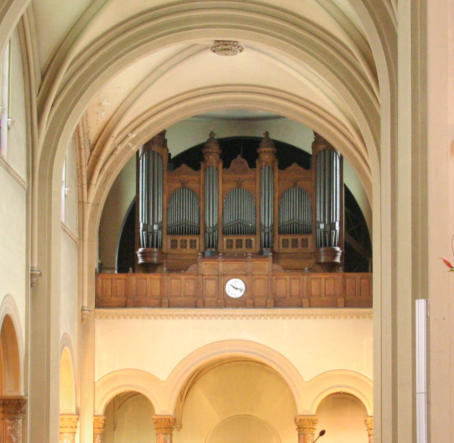

Until the advent of the Second Empire, Clignancourt was
only a small country village north of Paris. For worship, its
inhabitants were attached to the church of St. Peter of
Montmartre. In 1853, the villagers asked for permission to
build a new church, which was approved in 1858 by the
Paris City Council. The first stone was laid in May 1859. The
construction, in neo-Romanesque style, was entrusted to
the architect Paul-Eugène Lequeux (1806-1873). In 1863,
an imperial decree created the new parish whose church is
dedicated to Our Lady of the Immaculate Conception of
Clignancourt. Under the Commune, the church was
ransacked. Although it suffers from a slight lack of light,
the church has beautiful paintings made by renowned
artists (Félix-Joseph Barrias, Michel Dumas, Romain Cazes).
Its choir, adorned with murals and figurative stained-glass
windows, exudes a certain artistic warmth as it competes
for a beautiful axial chapel of the Virgin. The nave is
decorated with stained glass windows in the Art Deco
style.
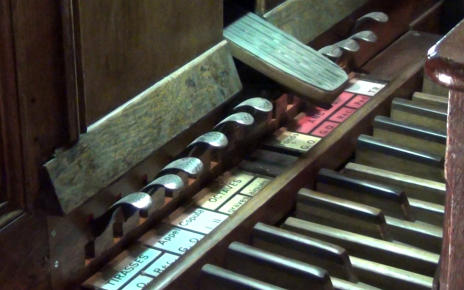
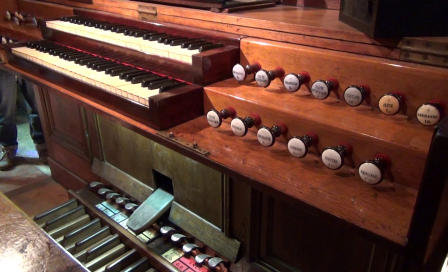
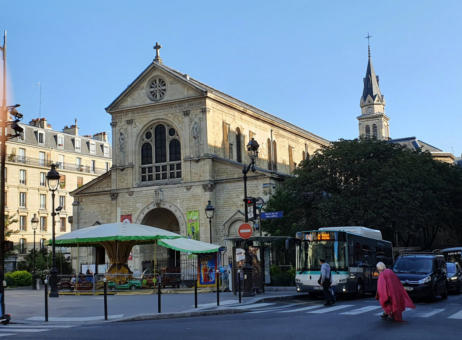
C3
The organ was built by Merklin in 1893.
In 1970, Beuchet-Debierre extended the organ and
carried out a re-harmonisation of the piping (entrusted
to J. Picaud). On this occasion, new Plein Jeu stops were
added.
In 1988, additional work was carried out by Jacques
Barbéris and the Parisian Manufacture des Grandes
Organs with the aim of improving the instrument that
suffered from heating.
In 1990, Dargassies carried out a complete restoration
that corrected the 1970 re-harmonization. Seven new
stops were added: Doublette 2' at GO,
Fourniture/Cymbal at GO; Flûte harmonique 8', Flûte
octaviante4', Octavin 2' and Carillon III at the Swell.
In 2010, Dargassies performed an overhaul.
Organiste titulaire
Emmanuel Berenz
Concerts
-
Masses with organ
Saturday7 PM (OdC), Sunday 9 AM (OdC), 11 AM (GO)
Videos
-
Photo organ case: Jeroen de Haan
1893 - Merklin (1)
1970 - Beuchet-Debierre (3a)
1988 - Barbéris (6)
1990 - Dargassies (4)
2010 - Dargassies (6)
II/26 - traction mécanique -
composition
Organs of Paris
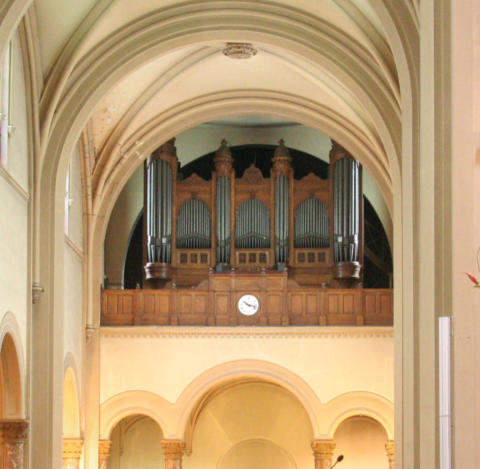
ORGANS OF PARIS © 2024 Vincent Hildebrandt ALL ORGANS
1893 - Merklin (1)
1970 - Beuchet-Debierre (3a)
1988 - Barbéris (6)
1990 - Dargassies (4)
2010 - Dargassies (6)
II/26 - traction mécanique -
composition
C3
The organ was built by Merklin in 1893.
In 1970, Beuchet-Debierre extended the organ and
carried out a re-harmonisation of the piping (entrusted
to J. Picaud). On this occasion, new Plein Jeu stops were
added.
In 1988, additional work was carried out by Jacques
Barbéris and the Parisian Manufacture des Grandes
Organs with the aim of improving the instrument that
suffered from heating.
In 1990, Dargassies carried out a complete restoration
that corrected the 1970 re-harmonization. Seven new
stops were added: Doublette 2' at GO,
Fourniture/Cymbal at GO; Flûte harmonique 8', Flûte
octaviante4', Octavin 2' and Carillon III at the Swell.
In 2010, Dargassies performed an overhaul.
